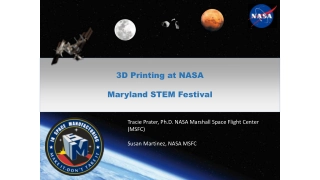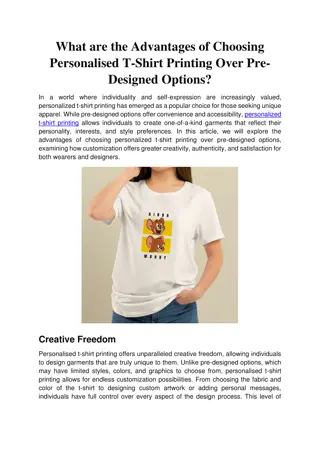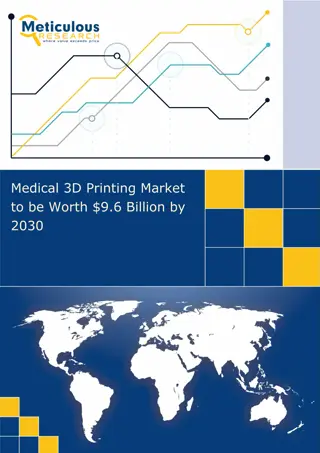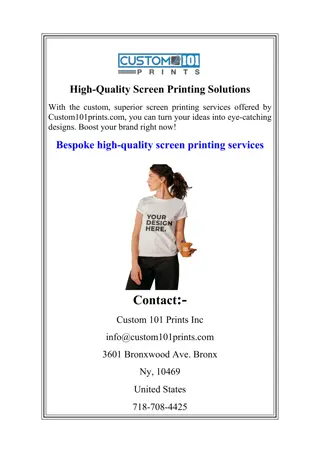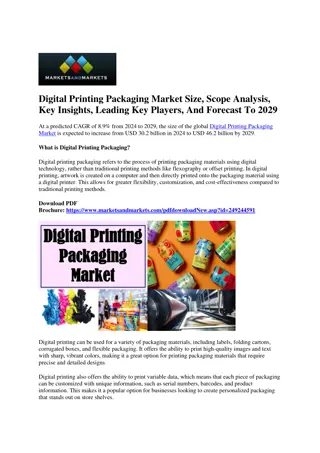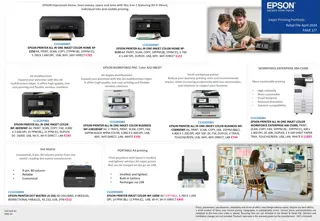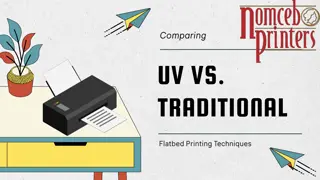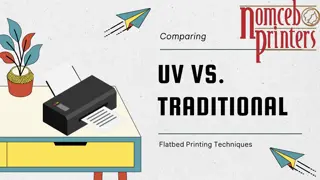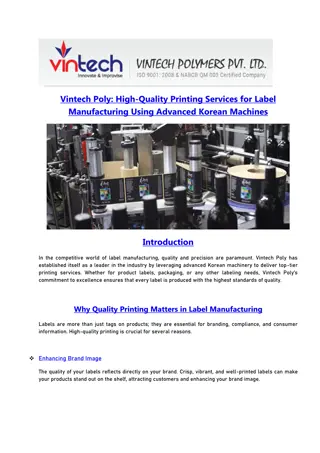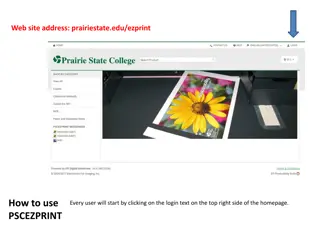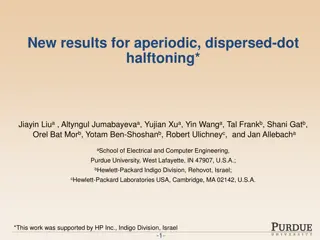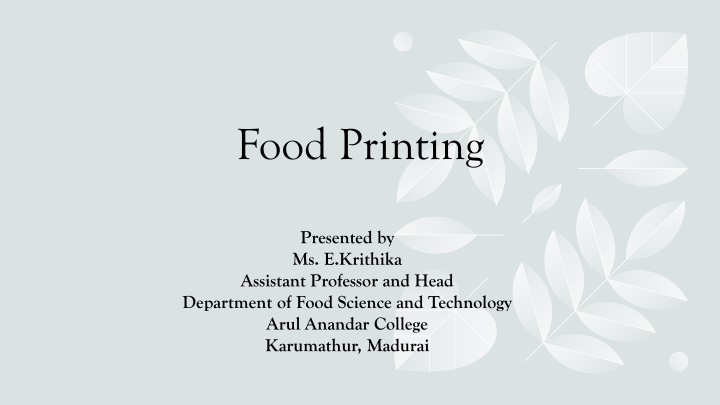
Innovative Food Printing Technology Overview
Explore the innovative technology of food printing, also known as 3D food printing, where specialized 3D printers use edible ingredients to create customized and intricate food items layer by layer. Discover its applications in customization, complex designs, nutritional control, food preservation, and sustainability.
Download Presentation

Please find below an Image/Link to download the presentation.
The content on the website is provided AS IS for your information and personal use only. It may not be sold, licensed, or shared on other websites without obtaining consent from the author. If you encounter any issues during the download, it is possible that the publisher has removed the file from their server.
You are allowed to download the files provided on this website for personal or commercial use, subject to the condition that they are used lawfully. All files are the property of their respective owners.
The content on the website is provided AS IS for your information and personal use only. It may not be sold, licensed, or shared on other websites without obtaining consent from the author.
E N D
Presentation Transcript
Food Printing Presented by Ms. E.Krithika Assistant Professor and Head Department of Food Science and Technology Arul Anandar College Karumathur, Madurai
Definition Food printing, also known as 3D food printing, is an innovative technology that involves the use of specialized 3D printers to create edible items. Instead of traditional printing materials like ink or plastic, these Food Printing printers use edible ingredients such as dough, chocolate, sugar, or even pureed fruits and vegetables. The printer deposits these materials layer by layer, following a digital design, to build up the desired food item.
Applications Customization: Food printing allows for the creation of highly customized food items tailored to individual preferences or dietary needs. For example, it can be used to create personalized birthday cakes or dietary-specific meals for people with allergies or restrictions. Complex Designs: Intricate food designs that are difficult or impossible to achieve by hand can be easily created with 3D food printing. This includes intricate patterns, shapes, or even entire meals designed for visual appeal. Nutritional Control: Food printers can be programmed to precisely control the nutritional content of the printed food, allowing for the creation of meals with specific calorie counts, macronutrient ratios, or added nutrients.
Applications Food Preservation: Some food printing techniques involve the use of freeze-dried ingredients, which can extend the shelf life of printed food items by removing moisture. This could be particularly useful for creating long-lasting emergency rations or space food for astronauts. Sustainability: By precisely controlling the ingredients and minimizing waste, food printing has the potential to be more sustainable than traditional food production methods. It can reduce food waste by only using the exact amount of ingredients needed for each item.
Definition 3D food printing is an innovative technology that involves the use of 3D printers to create edible food items layer by layer. It's 3 D Food Printing a fascinating intersection of technology and culinary arts, with potential applications ranging from personalized nutrition to addressing food shortages.
Working Ingredient Preparation: Food ingredients are typically in a semi-liquid or powdered form to be compatible with the printing process. These ingredients can range from doughs and pastes to purees and gels. Printing Process: The 3D printer deposits layers of the prepared food material according to a digital design or model. This is akin to traditional 3D printing, but with edible materials. Layering and Building: The printer builds up the food item layer by layer until the desired shape or structure is achieved. Different printing techniques can be used, such as extrusion or inkjet-based printing.
Working Customization and Design: One of the key advantages of 3D food printing is its ability to create intricate and customizable designs. This can be particularly useful for catering to individual dietary needs or preferences. Cooking or Solidification: Depending on the food being printed, additional steps may be required to cook or solidify the printed layers. This can involve processes such as baking, cooling, or curing. Presentation: Once the food item is printed and prepared, it can be served like any other dish, either on its own or as part of a larger meal.
3D food printing has the potential to revolutionize various aspects of the food industry, including personalized nutrition, food sustainability, and culinary creativity. However, there are still challenges to overcome, such as Conclusion the development of printable ingredients that retain flavor and texture, as well as the scalability and cost-effectiveness of the technology. Nonetheless, ongoing research and development efforts continue to push the boundaries of what's possible with 3D food printing.


